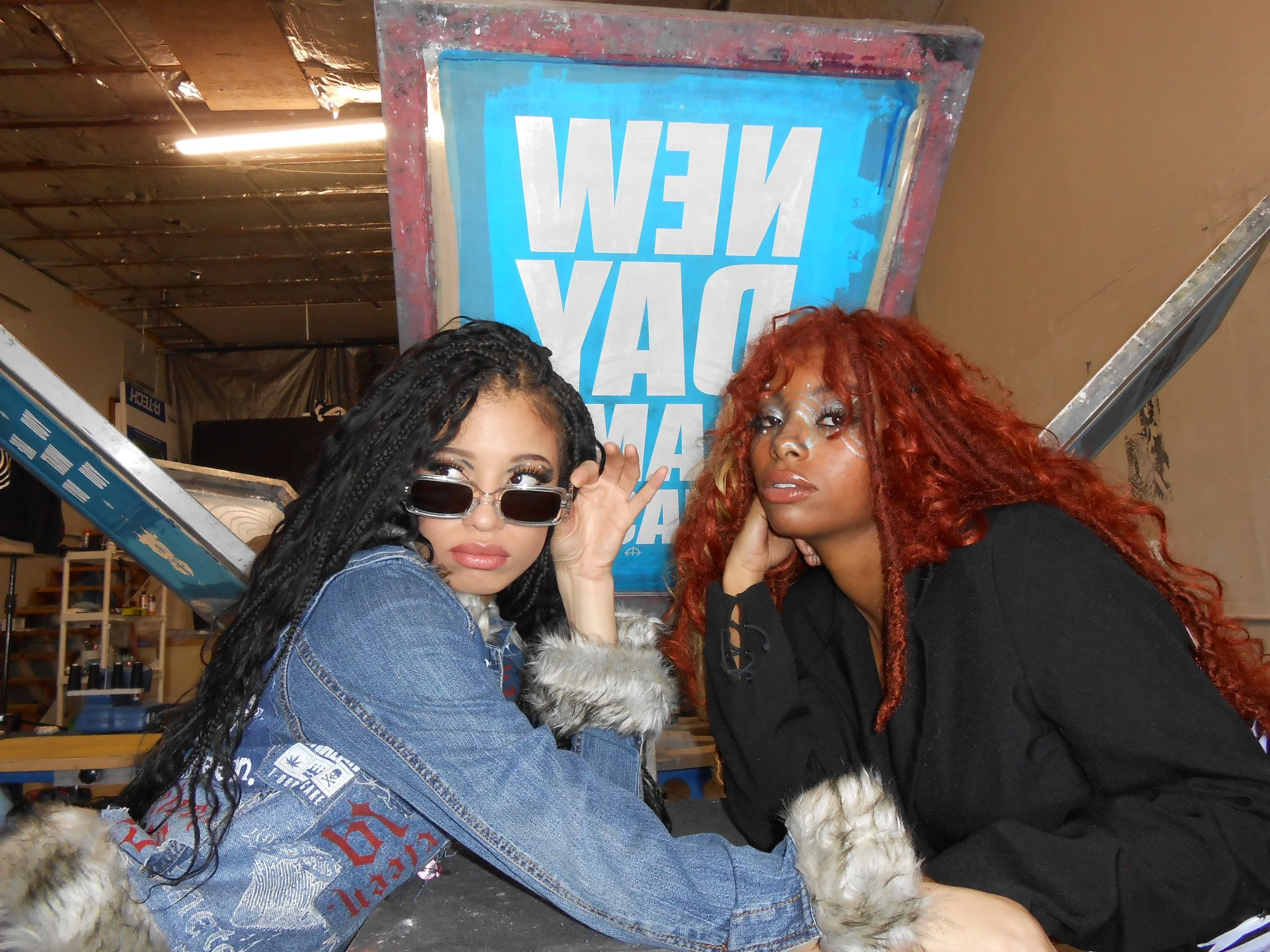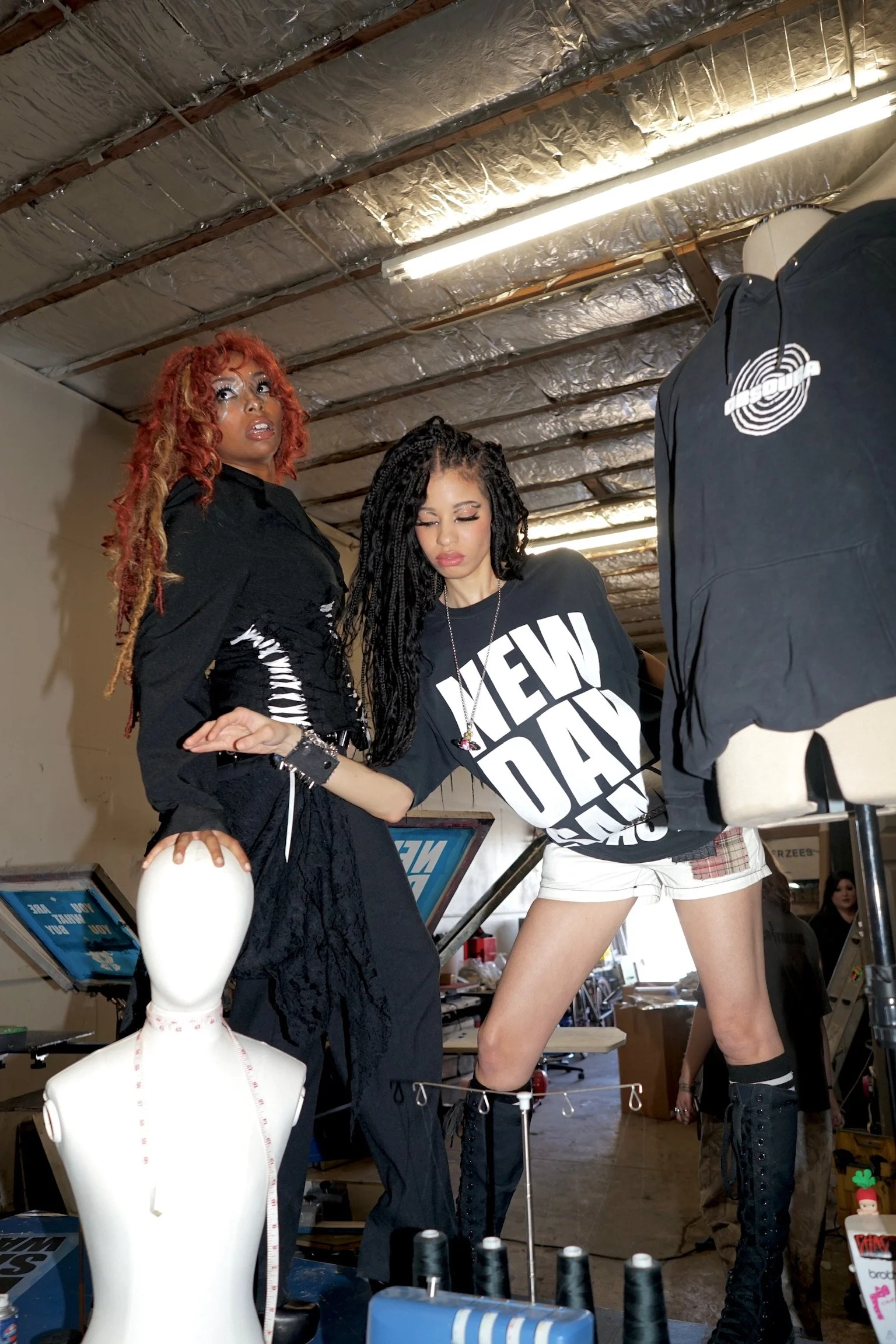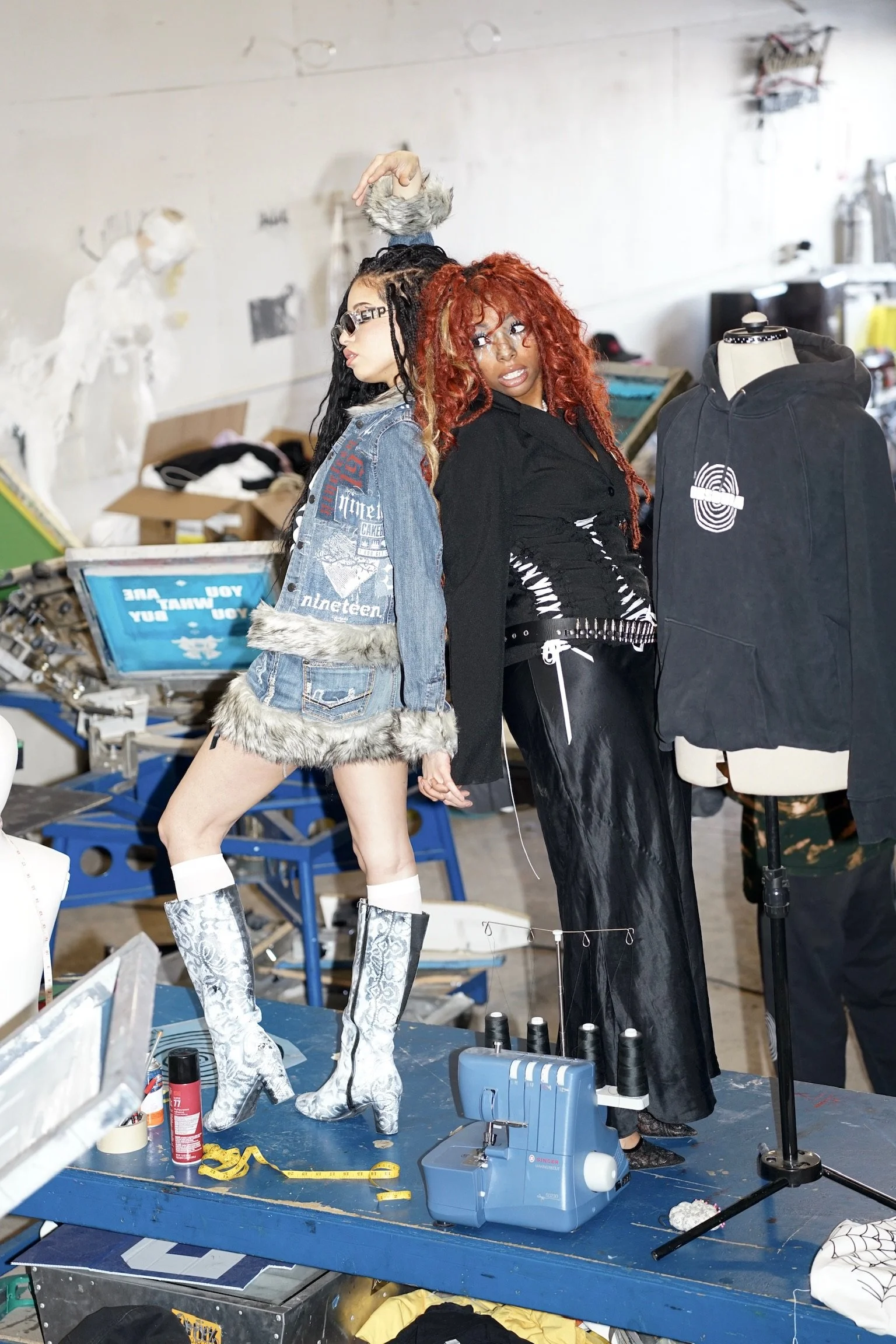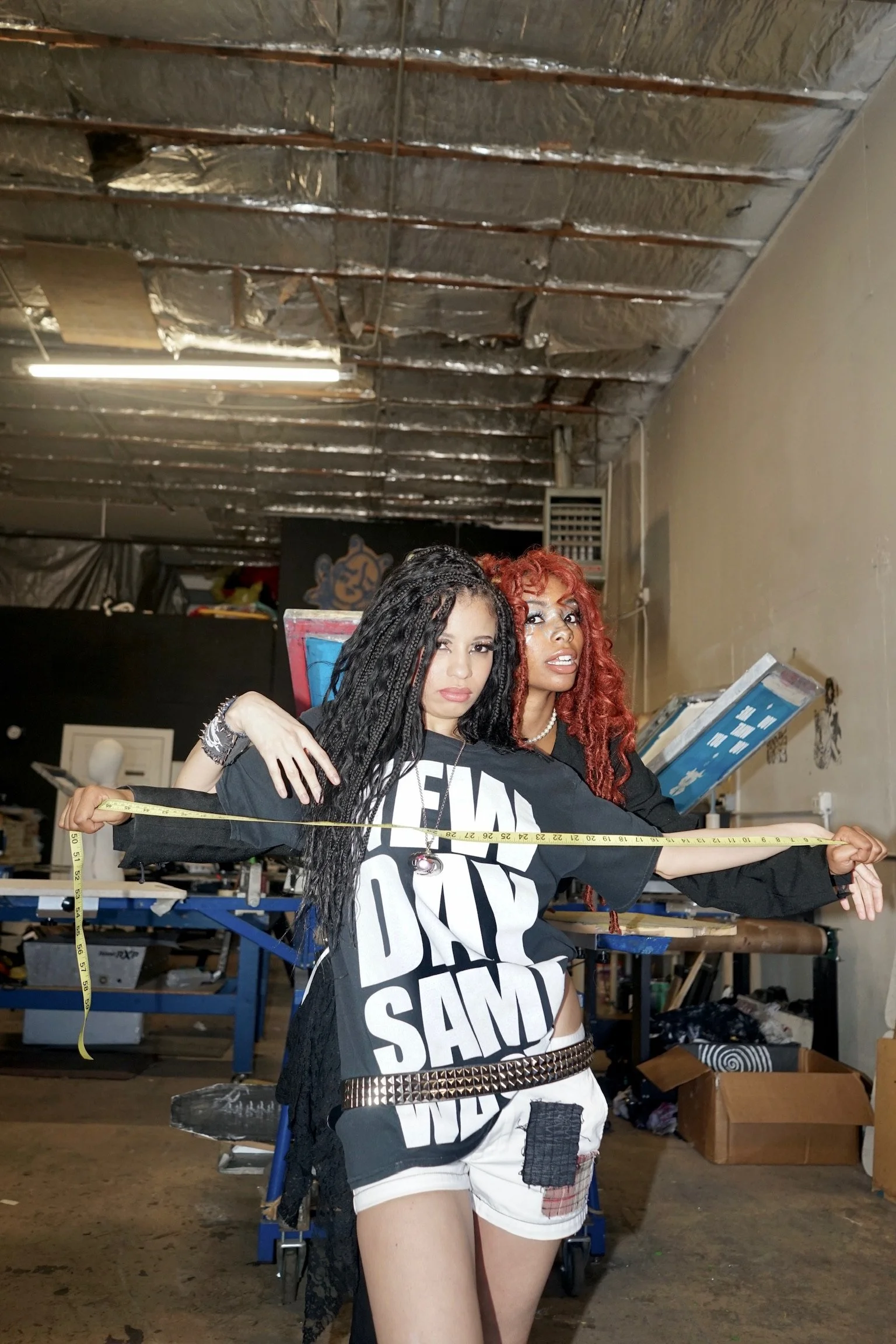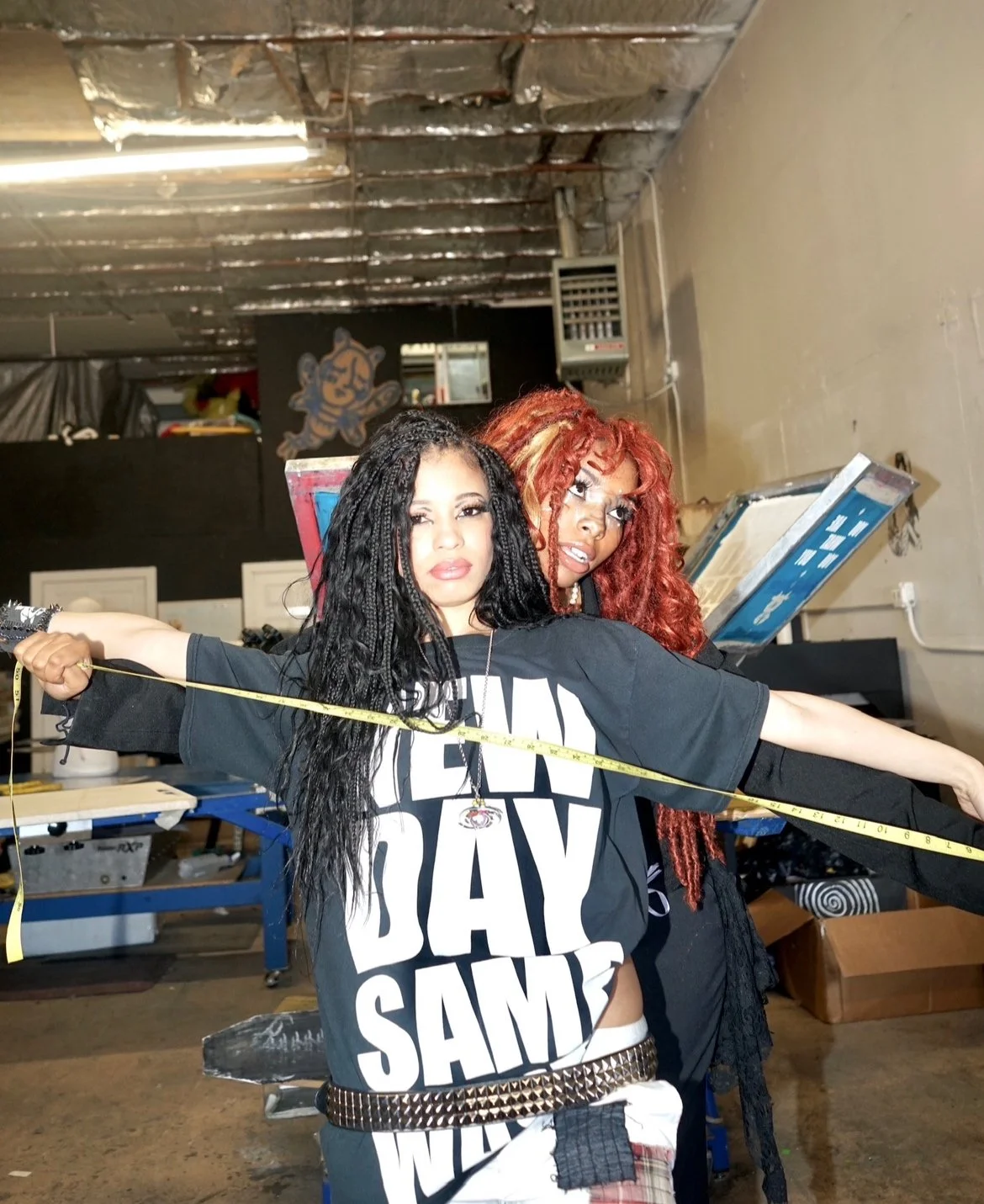New Day, Same Waste
What is the state of clothing craftsmanship? Do we even really care, or are we overwhelmed with pretty visuals? Have you worn that new top you bought at the flea market? Why did your friend start that clothing brand, really?
Both artisan and consumer are finding themselves muddled in the mug of consumerism, stirred in greed with granules of identity getting lost in the bottom of the cup. For many, discernment is just an optional, syrupy supplement to the fashion recipe.
Much like ‘you are what you eat,’ your purchasing power determines your identity. Essentially, the dichotomy of consumption, in excess or lack thereof, is that you are what you buy. Consumerism can be addicting and define your values without even knowing exactly what you’re buying into, literally and metaphorically.
The Luxury Debacle
This sentiment is especially critical to recognize as consumers in a time when thousands of emerging brands are being churned out of the algorithm incessantly ––and big name luxury brands are competing for attention spans like never before.
Buying into the luxury fashion trope is a slippery ethical slope that consumers can easily spiral deeper and deeper into. What are you truly buying into? Why do you feel inclined to buy luxury? What’s worthwhile about a luxury brand’s manufacturing, branding, quality?
There’s a consumer shift happening, slowly but surely. According to a Vogue Business article, 37% of survey respondents are shopping less for luxury fashion, with 41% of the respondent’s justifications being that these items are no longer a good value with declining quality.
Although luxury is still a $245 billion industry and expected to grow 2-4% in the next two years, values, quality, and transparency are driving consumers in a different direction –– and the brands are feeling it too. According to recent filings, Kering is 10.5 billion EU in debt. Burberry’s sales fell 6 percent in the first three months of 2025. Chanel sales are down 4%.
Consumers are beginning to question, why buy a $1,590 Louis Vuitton screen-printed t-shirt when you can buy a reworked shirt for $75 from someone in your local community? Or trade one-of-one clothes at a neighborhood clothing swap? They’re probably in the same ballpark as far as quality goes.
So buy local, support small business. Easy.
Sure, but that doesn’t necessarily tie up all the loose ends of the consumerism conversation.
The Haystack of Emerging Brands
If purchasing power is a consumer’s greatest asset, both financially and personally, then shopping local, second-hand, or supporting emerging designers would feel like the right move.
But even then, we’re still consuming. Buying hundreds of pieces at a thrift store to post a social media haul is better sustainably, but still overconsumption at the end of the day.
“If being 100% sustainable is the goal, then in order for one to fully embody the conscious consumer lifestyle, one has to make an entire lifestyle shift. (Which is almost impossible in this day and age) so understanding how to be circular is a more realistic goal. The popularization of “green” trends has misled us from the main issue: overconsumption…A want for more,” Designer Samantha Dederichs said.
And, most small and emerging brands hope to scale and expand to the level of luxury and mass-manufactured brands like the names we’ve been surrounded by growing up. Brands like Vivienne Westwood and Kawakubo, although still subversive and beautifully designed, were once considered radical and even, “anti-fashion” –– now they’re mass-manufactured, trendy and part of the esoteric-girl-turned-mainstream-niche aesthetic.
For the still-small designers and brands, is it so wrong to want to grow their business? Of course not. But as consumers and designers, we have to consider if by purchasing and supporting even an emerging brand, are we supporting a cash grab, a fast-fashion brand that’s just starting up, or a true artist that’s fulfilling their expression? Can you love fashion but hate the system it’s forced to run on?
“In a perfect world, I would like for emerging brands to stay small and really cater to their niche consumers as opposed to entering the mass audience and getting more people to buy their products,” multi-hyphenate creative and fashion commentator Saint Sissy said.
“That also means that we need to train ourselves as consumers about the ways that we think about our buying power and where that money goes and what that money helps create or destroy. Ultimately, it really should fall on the person making clothes to make sense of the work they produce in the fashion realm both in its artistic capacity, impact and longevity as well as ways in which it could be sustainable and less harmful to laborers and the environment.”
Regardless of the niche someone buys into, your purchasing power supports the labor and systems in place behind it, for better or worse – which begs the responsibility of the consumer to research the brands they’re buying from, to hold those brands, big or small, accountable for their transparency in supply and manufacturing.
Some emerging and mid-range sized brands that are transparent in their processes and artistic inspirations for creating include: Lust N Found 777, Cake Brain, Fuk Up, Nineteen Candles, Hott Pink Matter, Grace Gui, Caroline Zimbalist, Nicole Mclaughlin, Kristin Mallison, Milla Sullivan, Horsgorl, and Zero Waste Daniel.
One example of true transparency comes from textile designer and multimedia artist, Samantha Dederichs, who creates art with the goal to intertwine the relationship between fashion and nature through living textiles. These textiles grow fungi and plants that are then given back to the natural world by being composted or consumed.
“I create clothes because it’s art that interacts with the world. It feels like performance art as it says a lot about a person before a word is even spoken. Each piece becomes a living exhibition on their body,” Dederichs said. “But artistry in fashion isn’t just about aesthetics, it’s also about integrity. How it was made should align with the message it represents. There’s nothing avant-garde about exploitation. I like to believe the energy I put into my work travels with the person who wears it.”
The Era of Intentional Consumerism
For stylist and fashion influencer, Stanley Hardrick, intentional consumption is the key to supporting creatives and maintaining this balance between anti-consumerism and pro-fashion.
“When you know the story or the reason behind a design, it makes you look at it differently. It’s not just about the clothes—it’s about the message or the moment that inspired it. That detail, that thought process, is what makes me want to buy a garment,” Hardrick said. “It’s like, you’re not just wearing something; you’re wearing a piece of someone’s idea or vision, and that’s what makes it special.”
I recently came across a quote from iconic graphic designer Mike King that said, “The act of making something from leftovers, trash, and stolen things seemed at the time, a subversive act.”
It still feels like a subversive act in this time of overconsumption and pressures to stay on-trend in the fashion spheres. But choosing to be anti-fashion or even just focusing on product circularity a little more can make a big impact. Other options that begin to play a part in this conversation include clothing rentals, clothing swaps, creating more from what we have, and quite frankly, just buying less.
“Although the blame should be mostly on the multi million dollar companies causing this mess, we can still do our part where we can, whether it’s thrifting our clothes, cycling or using natural materials, there’s always a more sustainable option,” Dederichs said.
Whether or not you want to label yourself as pro or anti-fashion is up to your discretion – It’s an arbitrary piece to the puzzle. But, to be a fashion enthusiast of any kind means asking ourselves, “What am I enabling? Who am I supporting?” Even subversive aesthetics and creations of artistic expression are still ultimately, products being pushed.
Our July editorial, “New Day Same Waste” utilized thrifted and upcycled garments by local screen printers, designers, and stylists in Denver as an oxymoronic ode to “You Are What You Buy.”
Are you buying luxury pieces that uplift your ego and social currency, but supporting slave labor? Are you being your most original, authentic self, or leeching off of the people around you? Are you supporting someone who’s work truly represents their craft and identity through artistic expression? Are you representing a personified version of every micro-trend by constantly dopamine overdosing through purchases?
With models posed haphazardly across Dark Star Printing, with scattered supplies and designers at work, we hardly scratch the beautiful, vain surface of consumerism in the fashion world. Like a true fashion crucifixion, we hope to continue peeling this veil back piece by piece.
EDITORIAL CREDITS:
Photography: @feedthazombie @aaalexia23
Creative Direction: @aaalexia23
Stylist: @lustnfound777
Designers: @lustnfound777 @fukup.co @nineteencandles @_cakebrain
Models: @earthdads @sidneex9
Makeup: @thebeautybat.creative
Location: @silkroad.printing




